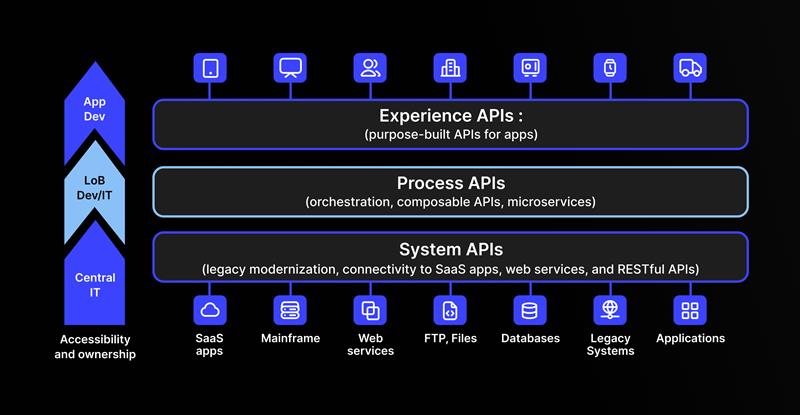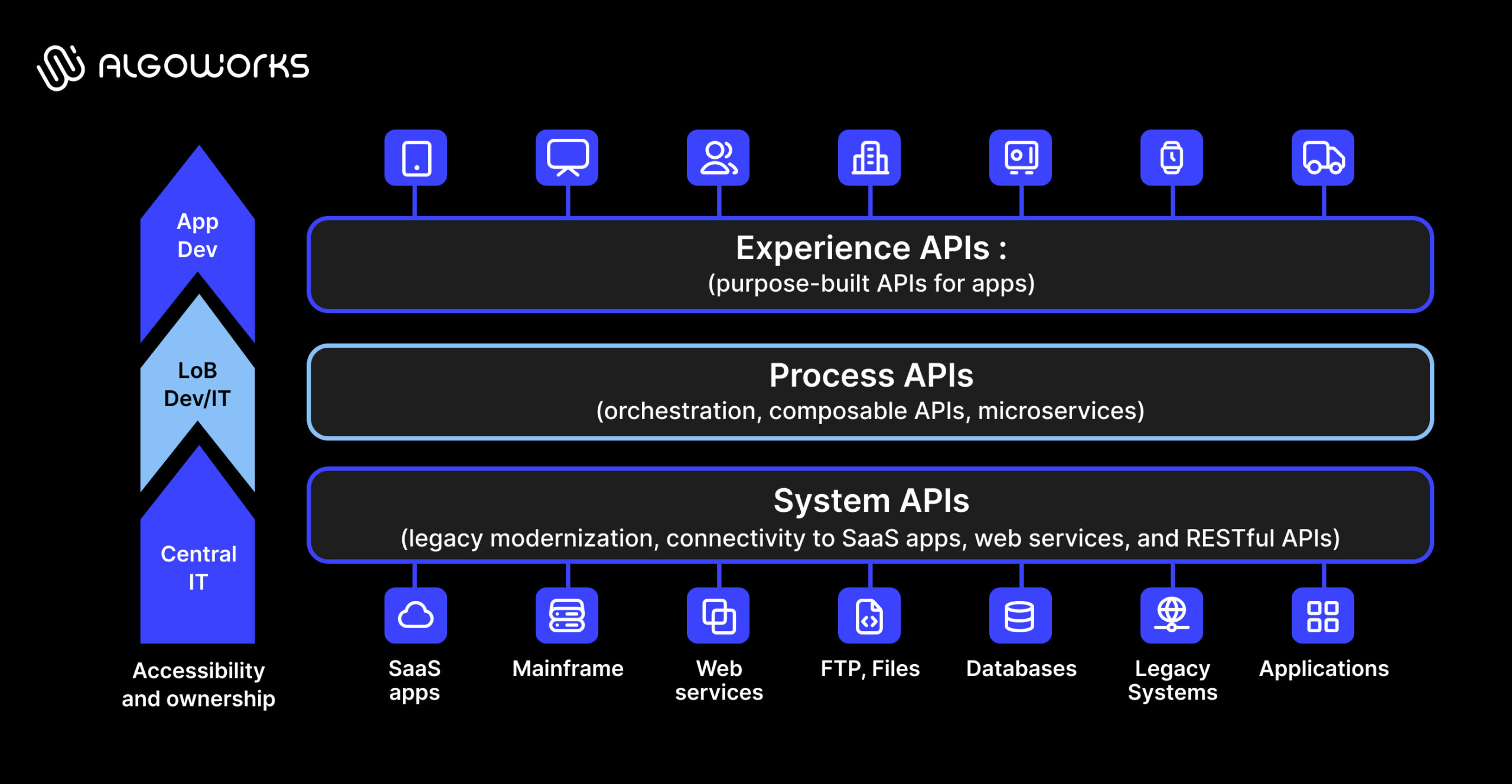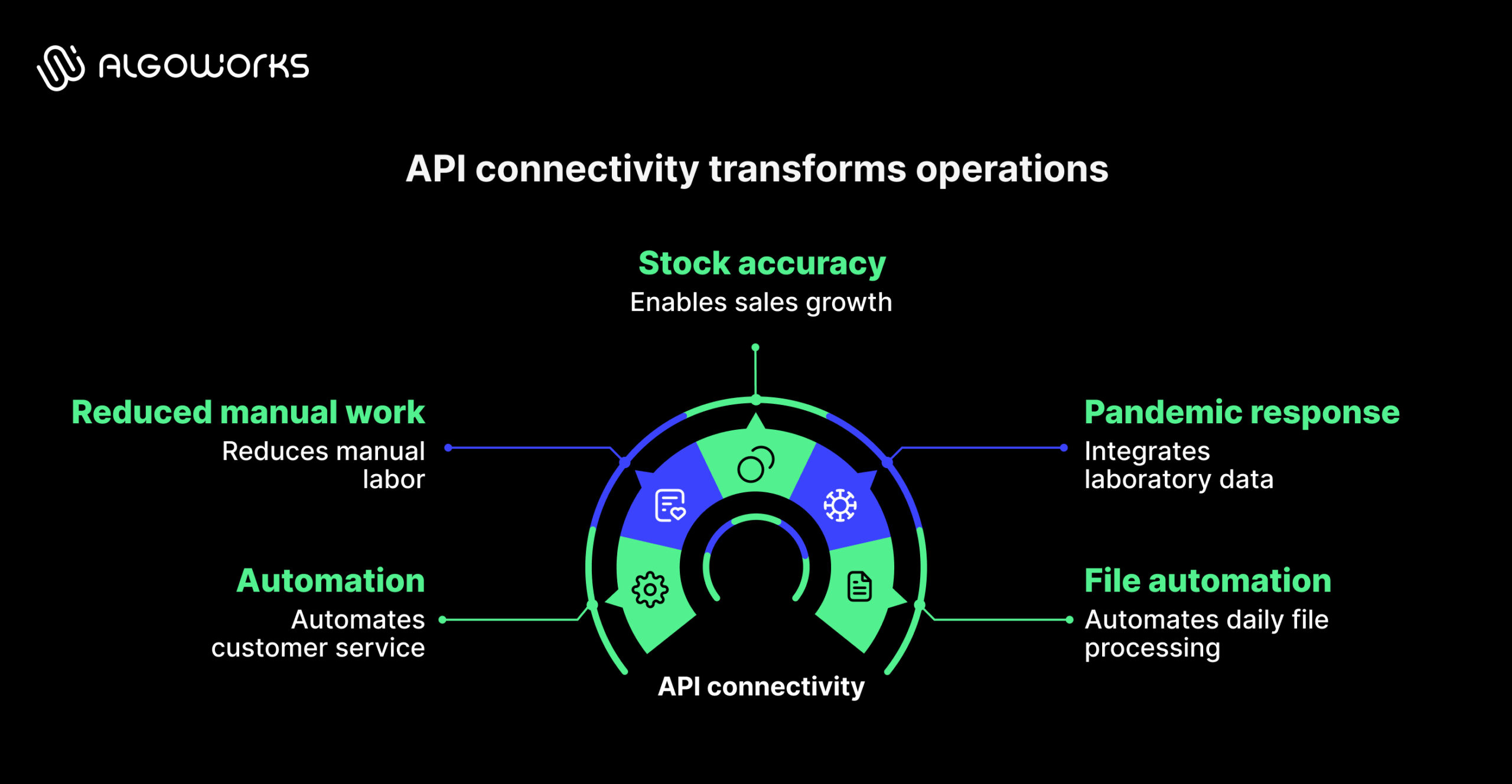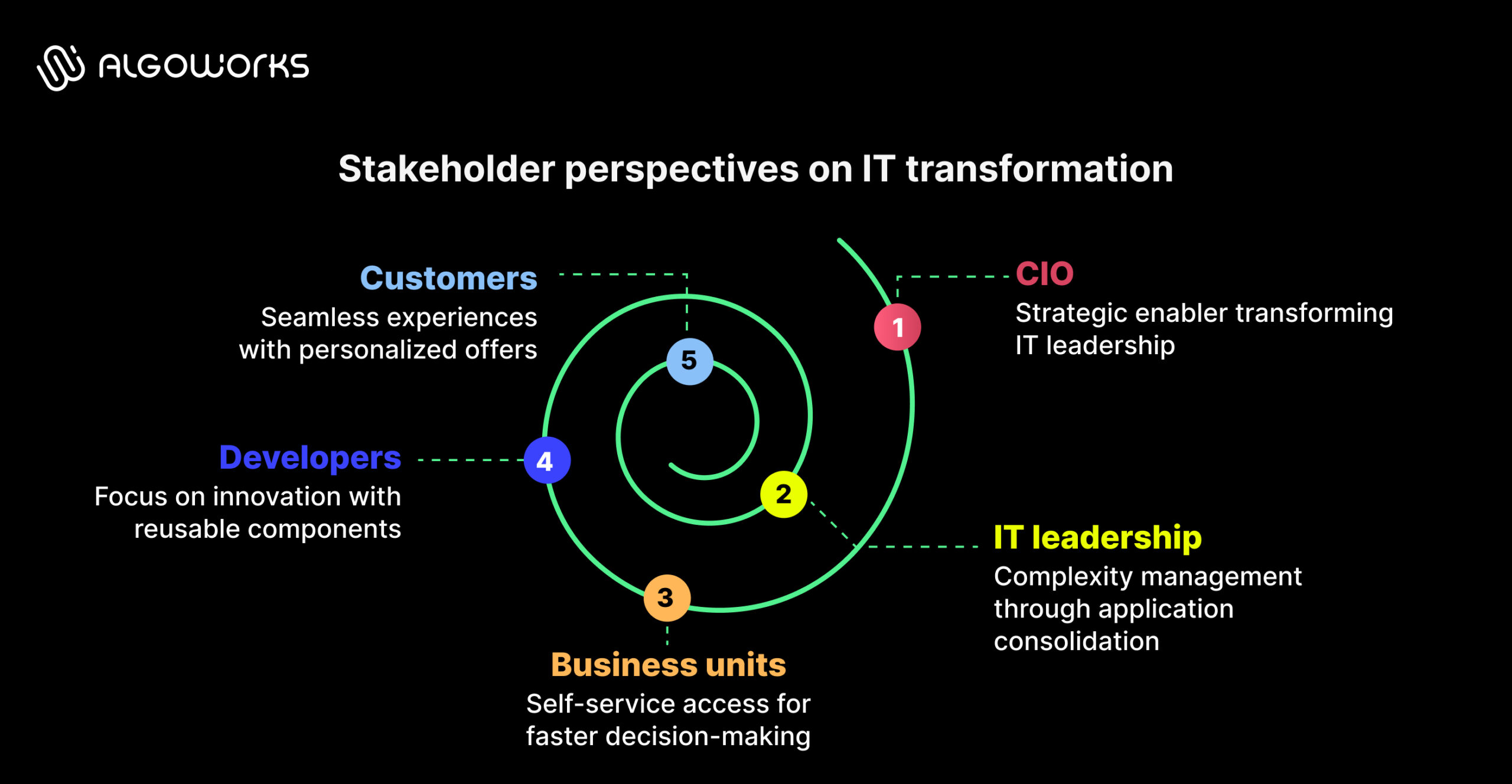Architecting digital agility: The enterprise case for MuleSoft API-led connectivity

Walk into any enterprise IT department today and you’ll hear the same frustration. Teams are drowning in integration requests while business units wait months for simple data connections. The numbers tell a stark story: only 29% of enterprise applications can actually communicate with each other, even though organizations run nearly a thousand different systems.
This isn’t just an IT problem; it’s a strategic liability showing up in slower time-to-market, frustrated customers and missed revenue opportunities. MuleSoft API integration offers a fundamentally different approach. With MuleSoft development services, enterprises turn disconnected systems into a unified digital core.
Why traditional integration fails at scale
Most enterprises built their integration landscape one connection at a time, creating point-to-point links as needs arose. This approach seems logical initially but breaks down catastrophically as organizations grow. With ten systems, you manage 45 connections. Add ten more systems and you’re maintaining 190 connections; exponential growth that becomes unmanageable.
The compounding problems:
- Each connection becomes a unique implementation with different technologies and patterns
- Documentation lives in scattered emails and outdated wikis
- Security teams face nightmares enforcing governance across hundreds of connections
- Simple changes like onboarding partners take six to nine months
- Innovation grinds to a halt in the integration queue
This requires an architectural solution, not just better tools.

The three-layer architecture explained
MuleSoft API integration introduces structured layers that transform integration from burden to asset.
System APIs: foundation layer
These APIs provide controlled access to core systems, unlocking data while insulating users from complexity. Think of them as organizational “nouns”: customer, order, product and invoice. Each presents a clean interface regardless of backend messiness.
Key benefits:
- Abstracts legacy system complexity
- Enables system migrations without disrupting consumers
- Creates reusable building blocks across the organization
- Centralizes security and governance at the data source
Process APIs: orchestration layer
The middle layer orchestrates multiple System APIs to execute complete business processes. These represent organizational “verbs”: CheckInventory, ProcessOrder and OnboardCustomer. A freight company used this pattern to orchestrate shipment tracking across logistics partners, normalizing data formats and calculating delivery times without touching legacy systems.
This orchestration approach also connects well with the growing use of intelligent agents; enterprises are now exploring how MuleSoft Agent Fabric enables AI-driven orchestration across systems and workflows to extend automation beyond traditional integrations.
Strategic value:
- Breaks down data silos through cross-system workflows
- Implements business logic independent of backend systems
- Enables process optimization without disrupting core systems
- Facilitates adding validation rules and machine learning models
Experience APIs: Channel optimization
The top layer delivers channel-specific experiences optimized for mobile, web, IoT or partner integrations. The same order data gets served as minimal JSON for mobile apps, detailed information for web portals, XML for partner integrations and aggregated metrics for dashboards.
Why this matters:
- Mobile experiences evolve without rewriting backend logic
- New channels launch by composing existing Process APIs
- Omnichannel consistency becomes operational reality
- User interfaces continuously improve while business logic remains stable
Quantifiable business impact
Forrester’s research on MuleSoft implementations documented $7.8 million in benefits within three years, with returns beginning year one.
Financial benefits breakdown
- $4.2M from API reusability across projects
- $1M in time savings on new API development
- 30% reduction in integration costs
- 60% faster application development for retailers
- 44% increase in developer productivity (INSEAD case study)
INSEAD saved 80 development hours per project while accelerating delivery; the same team producing more value in less time. This isn’t about working harder; it’s about architectural efficiency eliminating repetitive work.
Speed transformations
- Partner onboarding: 6-9 months → 60 days
- RBC Wealth Management: 3X faster delivery
- Lotus’s retail transformation: 18 months vs. planned 5 years (doubled sales in 2 years)
- Indiana DCS: COVID-19 solution launched in 8 hours
These aren’t marginal improvements; they represent fundamental shifts in organizational capability.

Operational excellence in action
Beyond speed and cost, MuleSoft API integration transforms daily operations through automation and unified visibility.
Real-world operational gains:
- Chorus: 64% of customer service requests automated
- INSEAD: 60% reduction in manual work
- Lotus’s: 98% stock accuracy enabling sales growth
- NSW Pathology: Pandemic response through laboratory integration
- EBMS: 80,000 daily files automated via EDI solution
These improvements compound over time. Faster processes create happier customers. Automated workflows reduce errors. Real-time visibility enables proactive problem-solving rather than reactive firefighting.
Industry-specific applications
Financial services
AXA Luxembourg achieved 30% faster system connections while building unified customer views for cross-selling opportunities. Through Salesforce integration, financial institutions connect CRM data with core banking systems, enabling relationship managers to see complete customer portfolios. Centralized governance through APIs simplifies GDPR and regulatory compliance.
Retail
WatchBox expanded into new regions 50% faster by replicating successful API patterns across markets. Inventory accuracy improvements eliminate the frustration of ordering unavailable products.
Manufacturing
Bayer Crop Science doubled product development speed with 5X faster time-to-market. Freight companies gained shipment visibility across carriers without requiring supplier system changes.
Government
City of Denver: 30% API reuse enabling faster government services. Indiana DCS demonstrated crisis response capability by launching solutions in hours, not weeks.
Healthcare
NSW Pathology integrated laboratory systems during the pandemic when every hour mattered. Salesforce Service Cloud implementations in healthcare enable patient service teams to access medical records, appointment systems and billing information through unified APIs.

Stakeholder perspectives
CIO: strategic enabler
Transforms from gatekeeper to strategic partner by saying “yes” more often. Timelines shift from months to weeks through reusable APIs. Security concerns get addressed through centralized governance.
IT leadership: Complexity management
M1 consolidated 150 applications to 30 while achieving 25% faster time-to-market. Legacy modernization becomes incremental rather than risky “rip and replace” projects.
Business units: Self-service access
Marketing directors and sales leaders get faster feature delivery and data-driven decision-making. Unified customer visibility enables representatives to close deals faster and resolve issues on first contact.
Developers: Focus on innovation
Reusable components let developers build differentiated capabilities instead of writing redundant integrations. Through app development best practices and self-service API discovery, developers achieve productivity from day one.
Customers: Seamless experiences
Unified views enable personalized offers instantly. Omnichannel consistency means carts follow customers across devices. Real-time inventory prevents ordering unavailable products.
Implementation success factors
Architecture best practices:
- Maintain clear separation of concerns across layers
- Document APIs as part of development, not afterward
- Establish security and governance frameworks early
- Design for reusability from the first API
Organizational requirements:
- Cross-functional collaboration between IT and business units
- Lightweight governance with automated policy enforcement
- Developer training on API design patterns
- Executive sponsorship and regular value communication
Proven starting approach:
- Select pilot projects delivering visible value quickly
- Target frequently requested integrations serving multiple stakeholders
- Build reusable API repositories with self-service discovery
- Measure and publicize reuse metrics demonstrating compounding value
Common pitfall to avoid: Poor collaboration between central IT, line of business and developers undermines even technically sound MuleSoft API integration implementations. API-led connectivity requires cross-functional cooperation more than traditional approaches.
The composable enterprise future
Organizations implementing API-led connectivity position themselves for continuous evolution. Over 35% of company revenues come from APIs and related add-ons in leading organizations through ecosystem partnerships and platform network effects.
Emerging technology enablement:
- AI/ML models access clean, well-structured data immediately
- Intelligent automation tools call stable APIs instead of brittle screen scraping
- IoT applications receive real-time data through edge-optimized APIs
- Microservices refactor behind stable API interfaces
The composable enterprise vision means launching new products by assembling existing capabilities; customer management, payment processing, inventory, shipping; reducing nine-month timelines to nine weeks.
The strategic imperative
90% of professionals agree APIs are keys to business success, yet many organizations still treat integration as purely an IT concern. This disconnect explains why innovative startups disrupt established enterprises; they architect for connectivity from day one.
Every delayed day grows technical debt. New point-to-point connections get built. Existing integrations become more brittle. Competitors using MuleSoft API integration approaches widen their advantage in markets moving at digital speed.
Integration architecture isn’t glamorous, but it enables everything else. Without solid connectivity, AI initiatives can’t access data. Digital transformation stalls waiting for integrations. Customer experience improvements require months of backend work.
Organizations recognizing integration as foundational gain cumulative advantages. Each API built makes the next project easier. Each reuse multiplies previous investments. These advantages compound over time, creating gaps competitors struggle to close.
Taking action
Digital agility isn’t about more tools; it’s about smarter architecture. MuleSoft API integration makes integration scalable, reusable and fast. At Algoworks, we help enterprises design and implement these architectures so systems talk seamlessly, teams deliver faster and innovation never stalls.
FAQs
What makes API-led connectivity different from traditional integration?
Point-to-point setups crack under scale because every new project creates more one-off connections. API-led connectivity flips that pattern. You build clean, reusable APIs in layered architecture, so new work relies on existing building blocks instead of starting from scratch.
How fast can enterprises see results after adopting MuleSoft?
Most teams notice improvements within the first few months. Reuse kicks in quickly. Partner onboarding drops from months to weeks, delivery cycles shorten and developers spend less time rewriting integrations.
Do we need to replace our legacy systems to use MuleSoft effectively?
Not at all. The whole idea is to wrap legacy systems with System APIs so you unlock data without risky migrations. Modernization becomes incremental, not a huge “rip and replace” project.
How does MuleSoft improve security and governance?
Instead of spreading rules across hundreds of custom connections, MuleSoft centralizes policies. You enforce authentication, rate limits and data controls at the API layer, which makes audits cleaner and reduces operational risk.
What kind of projects are ideal to start with?
Pick something visible and requested often, like customer data access or order status. These usually touch multiple teams, so the benefits show up fast and the APIs you build become reusable for later initiatives.
